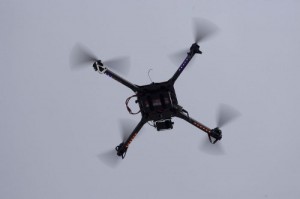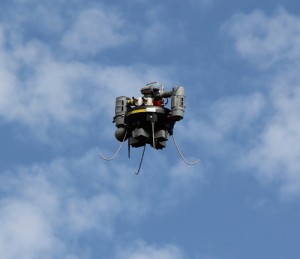When does an airborne aircraft resemble FOD? When it’s smaller than practically everything else in the sky.
Drones — basically any unmanned, remotely-controlled aircraft — populate our nation’s airspace in greater and greater numbers. Depending upon design, they are also described by various acronyns, such as UAV (Unmanned Aerial Vehicles), UAS (Unmanned Aircraft Systems), sUAS (small Unmanned Aircraft Systems) or mUA (micro Unmanned Aircraft).
Military and law enforcement agencies already use them extensively. Long banned for commercial purposes, the FAA has recently proposed a set of regulations that would allow the routine use small drones. So, it is only a matter of time before all manner of little machines start buzzing over your community, ranging in size from a small plane to a large insect.
It is the miniature drones that concern manned aircraft pilots and industry officials, because in size and behavior they often resemble a bird in flight. They can collide with manned aircraft before pilots have the opportunity to take evasive action. Their relatively fragile construction can cause FOD issues on the ground during a forced landing or airborne break-up.
The FAA receives approximately two dozen reports per month of either near misses between UAV’s and manned aircraft, or of UAV’s flying close to airports. In 2013 a four-foot-long unmanned helicopter came within 200 feet of a Boeing 777 during a landing approach at JFK International Airport. An analysis of possible consequences, had a collision occurred, includes many of the same results of a bird strike, such as a fodded-out engine or cockpit intrusion.
Of course, in most cases, a bird strike will more likely to bring down the bird instead of the aircraft. With small UAV’s, it’s just the opposite, as this video of a hawk attacking and crashing a quad-copter will attest. Now you have the potential for FOD debris on the ground.
So many UAV’s have taken to the skies so quickly, including private craft making low-altitude flights (which are not usually regulated by the FAA), that government officials struggle just to keep up with the pace of events. For instance, a local videographer caused a stir when his camera-mounted drone buzzed a suburb of Chicago one night to make a promotional video. Confusion abounded over whether or not he had created a safety hazard, invaded people’s privacy and followed FAA regulations.
A drone strike would also create a more complex knot of insurance and court cases. Unlike a FOD incident caused by a generic piece of debris (such as a small bolt) of unknown origin, or a bird strike where the perpetrator is a natural object, after a drone strike it would not be difficult to trace the ownership and manufacturer of the offending craft. You would know exactly who to sue or prosecute.
One way to unclog the traffic, at least during takeoff and landing operations, is to give drones their own dedicated airport. The U.S. Army is doing just that, building a launch and recovery complex specifically for its military UAV’s. Located at Fort Bliss, Texas, it will include two runways, taxiways, a hangar, aprons and maintenance assets.
Military aviation faces some of its greatest FOD challenges when deploying to forward locations with no airfields or improved surfaces. To help solve this problem, a British manufacturer of portable runways developed an aluminum UAV Landing Mat for the Australian Armed Forces.
A partnership between the FAA, the UAV industry and model aircraft enthusiasts has put up a website, Know Before You Fly, that encourages responsible behavior by private drone operators.





